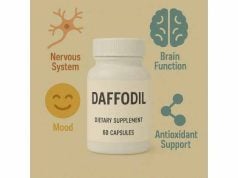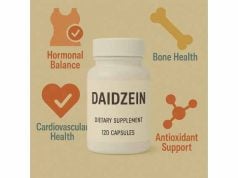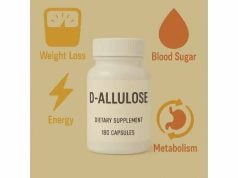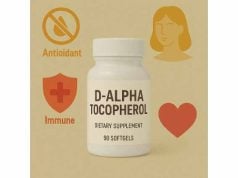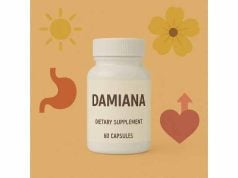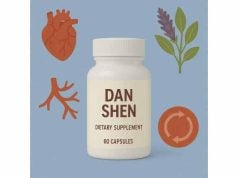
D-mannitol is a six-carbon sugar alcohol best known in medicine as an osmotic agent that pulls water out of tissues and into the bloodstream. Clinicians use intravenous mannitol to lower dangerously high pressure in the brain (intracranial pressure) or eye (intraocular pressure), and pulmonologists use inhaled mannitol to help clear thick mucus in adults with cystic fibrosis. It also serves as the active agent in a standardized “bronchial challenge” test for airway hyperresponsiveness. Although mannitol appears in foods as a low-calorie sweetener, the therapeutic forms and doses are prescription-only and require professional monitoring because fluid shifts can be profound. This guide explains how mannitol works, where it helps (and where it doesn’t), typical dosing strategies, key risks, and what the latest guidelines say—so you can understand the therapy your team may recommend and what to expect in real-world care.
Quick D-Mannitol Highlights
- Lowers intracranial or intraocular pressure rapidly by osmotic diuresis; effect begins within minutes when given IV.
- Inhaled mannitol can improve lung function as add-on therapy in adults with cystic fibrosis after a tolerance test.
- Typical IV bolus dosing for brain swelling: 0.25–1 g/kg; for acute angle-closure glaucoma: 1–2 g/kg.
- Safety caveat: risks include kidney injury, electrolyte shifts, dehydration, and rebound intracranial pressure with repeated dosing.
- Avoid if you have anuria, severe pulmonary edema/congestion, or active intracranial bleeding (except during craniotomy); do not self-dose.
Table of Contents
- What is D-mannitol and how it works
- Proven uses and when it helps
- How to take D-mannitol: dosing and forms
- Factors that change response and monitoring
- Mistakes, risks, and who should avoid it
- What the evidence says today
What is D-mannitol and how it works
D-mannitol is a polyol (sugar alcohol) produced industrially by reducing glucose. In medicine, it is sterile, nonpyrogenic, and formulated for intravenous use at concentrations such as 10% or 20%, or as a dry-powder inhalation product for specific respiratory indications. Its core mechanism is osmotic: because mannitol is confined largely to the extracellular space and filtered by the kidneys without substantial metabolism, an intravenous dose acutely raises plasma osmolality. Water then moves from tissues with lower osmolality (for example, edematous brain parenchyma) into the intravascular compartment, shrinking swollen tissue volumes and decreasing pressure. The diuresis that follows helps excrete this shifted water load.
In neurocritical care, that osmotic gradient is leveraged to lower intracranial pressure (ICP) and treat cerebral edema from conditions such as traumatic brain injury, intracerebral hemorrhage, or large ischemic strokes with malignant edema. In ophthalmology, the same principle reduces intraocular pressure by moving water out of the vitreous and aqueous compartments, which is useful in acute angle-closure glaucoma when sight-threatening pressure spikes require rapid control pending definitive treatment.
Inhaled mannitol acts differently. As a dry powder, it deposits in the airways, drawing water into the airway lumen. This hydrates and loosens thick mucus, making it easier to cough out. In adults with cystic fibrosis, that improved mucus clearance can translate into better measured lung function and reduced symptom burden when used as add-on maintenance therapy—but only after a supervised tolerance test to screen for bronchospasm. Mannitol also serves as the active agent in a standardized bronchial challenge: escalating inhaled doses provoke airway narrowing in susceptible individuals, allowing clinicians to quantify airway hyperresponsiveness as part of an asthma work-up.
Outside the clinic, mannitol appears in foods and pharmaceuticals as a low-calorie sweetener and tablet excipient. Those amounts are far lower than therapeutic intravenous doses. Because even moderate oral intakes can cause osmotic diarrhea, mannitol is not used orally for fluid shifts. The important takeaway: when mannitol is used as a drug (IV or inhaled), it is a potent osmotherapeutic that requires careful dosing, timing, and monitoring by professionals who understand its benefits and its risks.
Proven uses and when it helps
Lowering intracranial pressure and cerebral edema. In acute neurologic emergencies, clinicians often reach for hyperosmolar therapy to reduce ICP. Mannitol has decades of bedside use. Contemporary guidelines suggest that either mannitol or hypertonic saline can be used initially in acute ischemic stroke with symptomatic cerebral edema, and that mannitol remains an effective alternative when hypertonic saline is unsuitable. In traumatic brain injury or intracerebral hemorrhage, several panels lean toward hypertonic saline as the initial choice but acknowledge that mannitol effectively lowers ICP and can be used based on patient status, local protocols, and drug availability. In practice, mannitol is commonly chosen when rapid diuresis is desirable, when serum sodium is already high, or when vascular access favors mannitol over concentrated saline solutions.
Rapid reduction of intraocular pressure. In acute angle-closure glaucoma, mannitol administered intravenously can quickly reduce intraocular pressure while definitive ophthalmic therapy proceeds. Protocols often combine mannitol with topical medications and systemic agents as part of a stepwise regimen to stabilize the eye, protect the optic nerve, and relieve severe pain from corneal edema.
Airway applications. Two uses are distinct. First, inhaled mannitol (brand Bronchitol) is approved as add-on maintenance therapy in adults with cystic fibrosis. Patients must pass an in-office Bronchitol Tolerance Test (BTT) to minimize risk of severe bronchospasm; successful candidates then take twice-daily doses to hydrate airway mucus and enhance clearance alongside standard care. Second, inhaled mannitol is the active stimulus in the Aridol bronchial challenge test, a standardized, step-up protocol used in adults and children ≥6 years to assess airway hyperresponsiveness as part of an asthma evaluation. Here, mannitol is not a treatment but a diagnostic tool delivered in escalating doses until a defined drop in FEV₁ is observed or a maximum cumulative dose is reached.
What mannitol is not recommended for. Routine prevention of contrast-induced nephropathy, prophylaxis against cerebral edema in ischemic stroke, or indiscriminate prehospital use for head injury are not supported by evidence and may cause harm. Similarly, while mannitol has been studied experimentally for neurologic disorders beyond edema (for example, as a potential enhancer of blood–brain barrier permeability), these investigational avenues have not translated into standard clinical benefits and remain research topics rather than accepted indications.
Role in general medicine and surgery. Historically used as a “renal flush,” mannitol’s diuretic effect is now applied more selectively—such as to promote urine flow in certain perioperative contexts when obstruction and hypovolemia have been ruled out. Because osmotic nephrosis and acute kidney injury can occur, modern practice emphasizes careful patient selection and continuous monitoring rather than routine use.
Bottom line: mannitol’s benefits are clearest when a rapid osmotic shift is needed—brain swelling, dangerously high eye pressure, or airway mucus hydration in eligible adults with cystic fibrosis—and when expert teams can manage the fluid, electrolyte, and kidney considerations that come with its power.
How to take D-mannitol: dosing and forms
Intravenous (IV) mannitol for intracranial pressure. In many protocols, clinicians give 0.25–1 g/kg intravenously over 15–20 minutes, adjusting based on clinical response, serum osmolality or osmolar gap, urine output, and hemodynamics. Repeat doses may be considered when signs of herniation or rising ICP recur, but cumulative exposure increases risk of kidney injury and rebound ICP. In some centers, using the osmolar gap (<20 mOsm/kg) is preferred over an absolute osmolality cutoff to guide redosing because it better reflects mannitol accumulation. Patients with disrupted blood–brain barrier are at higher risk of rebound edema after repeated doses.
Intravenous mannitol for intraocular pressure. For acute angle-closure glaucoma, typical dosing is 1–2 g/kg of a 15–20% solution infused over at least 30 minutes. When used preoperatively (for example, before ocular surgery), mannitol is often timed 60–90 minutes before the procedure to maximize pressure reduction. Blood pressure, fluid status, electrolytes, and urine output are followed closely during infusion.
Inhaled mannitol for cystic fibrosis (maintenance therapy). For adults who pass the BTT, the labeled maintenance dose is 400 mg twice daily—the contents of 10 × 40 mg capsules inhaled individually in the morning and again in the evening, at least 2–3 hours before bedtime. A short-acting bronchodilator should be used 5–15 minutes before every dose. Patients are taught proper inhaler use and replacement schedules, and they are advised to stop treatment and seek care if they develop hemoptysis or bronchospasm.
Mannitol for bronchial challenge testing (diagnostic use). The Aridol kit provides a step-up sequence of inhaled doses (0, 5, 10, 20, 40, 80, 160, 160, and 160 mg), reaching a maximum cumulative dose of 635 mg if earlier criteria for a positive test are not met. FEV₁ is measured at baseline and after each step. A positive response is defined by a ≥15% fall in FEV₁ from baseline or a ≥10% decrease between consecutive doses, at which point the test is stopped and a short-acting bronchodilator is given.
Oral exposure from foods. Mannitol in foods or tablets is not a therapeutic route. It is poorly absorbed, contributes fewer calories than sugar, and may cause osmotic diarrhea at higher intakes. These exposures are unrelated to clinical dosing and should not be used to self-treat conditions where IV or inhaled mannitol is indicated.
Drug interactions and administration tips. For IV therapy, mannitol should be administered through appropriate lines; hypertonic solutions (≥10%) can irritate peripheral veins and may require large-vein access. Inspect bags for crystals; if present, warm and dissolve completely, then cool before administration. Avoid combining with blood products unless sodium chloride is added to prevent pseudoagglutination. Concomitant nephrotoxic drugs (for example, aminoglycosides) or other diuretics increase renal risk; review and coordinate medications carefully.
Special populations. Neonates and very young children are more susceptible to fluid and electrolyte disturbances. In pregnancy, mannitol crosses the placenta and can shift fetal fluids; use is individualized. In older adults with reduced kidney reserve, lower thresholds for stopping or switching therapy are prudent.
These dosing anchors provide a framework, but real-time decisions depend on bedside data. Mannitol is powerful; thoughtful administration and vigilant monitoring are what convert that power into benefit.
Factors that change response and monitoring
Baseline volume status and kidney function. Mannitol works by shifting water and promoting diuresis. Hypovolemia magnifies hypotension risk; volume overload increases the chance of pulmonary edema. Before starting and throughout therapy, clinicians check hemodynamics and correct dehydration or congestion. Reduced glomerular filtration increases the likelihood that mannitol will accumulate, raising serum osmolarity and osmolar gap and predisposing to osmotic nephrosis and acute kidney injury (AKI).
Blood–brain barrier integrity. Mannitol’s ICP-lowering effect depends partly on an intact barrier that keeps mannitol intravascular. When the barrier is disrupted (for example, contusions, tumor, hemorrhagic transformation), mannitol may seep into brain tissue, reverse the osmotic gradient, and contribute to rebound cerebral edema—especially with repeated dosing. This is one reason some guideline panels favor hypertonic saline initially in certain neurocritical scenarios.
Serum sodium and osmolality. Hypertonic saline directly raises serum sodium; mannitol raises osmolality but not sodium. If serum sodium is already high, mannitol may be preferred to avoid worsening hypernatremia. Conversely, patients with hyponatremia or at risk of rapid shifts may benefit from strategies that limit osmotic swings. Many teams track osmolar gap (measured osmolality minus calculated) to watch for mannitol accumulation rather than relying solely on an absolute osmolality threshold.
Concomitant drugs. Aminoglycosides, cyclosporine, and other nephrotoxins compound renal risk. Drugs sensitive to electrolyte shifts (for example, digoxin, QT-prolonging agents, neuromuscular blockers) may have altered effects if mannitol triggers hypo- or hyperkalemia. Lithium clearance can initially increase with mannitol but toxicity risk rises if hypovolemia or kidney injury develops; clinicians often hold or adjust lithium and monitor levels when hyperosmolar therapy is underway.
Airway responsiveness and lung history. For inhaled mannitol, baseline airway hyperreactivity predicts risk of bronchospasm. The Bronchitol Tolerance Test is designed to mitigate this. A pre-dose short-acting bronchodilator is part of the maintenance regimen, and patients with recent significant hemoptysis are generally not candidates for therapy. Technique matters: correct capsule handling and inhalation flow are essential for consistent dosing.
Coexisting cardiac or pulmonary disease. IV mannitol can precipitate heart failure exacerbation or pulmonary edema in susceptible patients because intravascular volume rises before diuresis begins. Clinicians watch for dyspnea, hypoxemia, rising jugular venous pressure, or new crackles and stop therapy if pulmonary status worsens.
Laboratory interferences. High mannitol concentrations may falsely lower phosphate results in certain assays and can falsely elevate ethylene glycol readings in some toxicology methods. Teams interpreting labs during mannitol therapy take these interferences into account to avoid chasing spurious values.
Monitoring bundle to expect. With IV mannitol for neurologic indications, typical monitoring includes frequent neurologic checks, ICP (if a monitor is present), serum sodium, potassium, bicarbonate, creatinine, measured serum osmolality and/or osmolar gap, strict input/output with urine output targets, and exam for peripheral edema or pulmonary congestion. For inhaled maintenance therapy, clinics reassess lung function, symptoms, and adherence; they also reinforce inhaler technique and review any episodes of cough with blood.
Understanding these variables helps patients and families interpret why teams choose mannitol or an alternative—and why dosing or re-dosing is sometimes paused even when symptoms persist. Safety, in this context, is a moving target guided by data.
Mistakes, risks, and who should avoid it
Common pitfalls with IV mannitol.
- Redosing too soon or too often. Without tracking urine output and osmolar gap, cumulative doses can build up, leading to AKI, CNS toxicity (confusion, lethargy, seizures), or rebound ICP.
- Starting during uncorrected hypovolemia. A preload “dip” can worsen cerebral perfusion or trigger hypotension; volume resuscitation and vasopressor support may need to precede osmotic therapy.
- Overlooking pulmonary risk. In patients with heart failure or pulmonary vascular congestion, mannitol can precipitate pulmonary edema—a listed contraindication when severe.
- Inadequate line selection. Concentrated solutions irritate peripheral veins; extravasation can cause compartment syndrome and tissue injury.
- Mixing errors. Administering mannitol alongside blood products without adequate sodium can cause pseudoagglutination; this is avoidable with proper preparation.
Adverse effects to know. Reported reactions include fluid and electrolyte imbalances (hypo- or hypernatremia, hypo- or hyperkalemia, metabolic acidosis/alkalosis), renal failure, CNS toxicity, and infusion-site reactions including phlebitis or swelling with extravasation. Because mannitol raises serum osmolality quickly, dizziness or headache can occur. Rare hypersensitivity reactions (including anaphylaxis) have been described.
Who should not receive IV mannitol. Contraindications include anuria, severe hypovolemia, pre-existing severe pulmonary vascular congestion or pulmonary edema, and active intracranial bleeding (except during craniotomy), along with known hypersensitivity. In these settings, the risks generally outweigh potential benefits.
Mistakes with inhaled mannitol. Skipping the tolerance test or forgetting the pre-dose bronchodilator increases bronchospasm risk. Using the inhaler without proper technique reduces lung deposition and blunts benefit. New or worsening hemoptysis warrants stopping and contacting the clinical team immediately. Inhaled mannitol is not indicated in children and adolescents in the United States as maintenance therapy for cystic fibrosis; adult use only.
Drug interaction traps. Overlapping diuretics or nephrotoxins heighten kidney risk; coordinate closely around chemotherapy, calcineurin inhibitors, or aminoglycosides. For medications influenced by potassium (for example, digoxin), monitor more frequently when electrolyte swings occur.
Self-treatment is inappropriate. Therapeutic mannitol (IV or inhaled) is prescription-only, with dosing tailored to dynamic clinical data. Food-grade mannitol is not a substitute and can cause significant GI upset long before therapeutic thresholds are reached.
When to consider alternatives. If renal reserve is tenuous, pulmonary edema is present, or the blood–brain barrier is severely disrupted, many teams choose hypertonic saline first for ICP management. If inhaled mannitol triggers bronchospasm or hemoptysis, clinicians may optimize airway clearance with other modalities (for example, hypertonic saline nebulization, oscillatory devices, or physiotherapy) according to cystic fibrosis guidelines.
The safest course with mannitol is a deliberate one: confirm the indication, set up monitoring, and stop early at the first sign that risks are overtaking benefits.
What the evidence says today
Neurocritical care guidance has evolved. A multi-disciplinary guideline panel concluded that both hypertonic saline and mannitol reduce ICP. In acute ischemic stroke, either can be used initially, while prophylactic mannitol (scheduled doses without signs of edema) may be harmful and should be avoided. In traumatic brain injury and intracerebral hemorrhage, panels tend to favor hypertonic saline for the initial bolus because of practical and physiologic advantages, yet still recognize mannitol as an effective alternative, particularly when high serum sodium or fluid-resuscitation considerations make saline less attractive. Major stroke society guidance for intracerebral hemorrhage echoes the role of hyperosmolar therapy as a rescue for elevated ICP, with local practice dictating the agent and dose.
Clinical outcomes versus physiologic goals. Importantly, while mannitol repeatedly shows physiologic benefits—lower ICP, improved cerebral compliance—improvements in long-term neurologic outcomes have been inconsistent. This gap underlies cautious recommendations about when to start, when to stop, and why to avoid routine prophylaxis. In other words, mannitol is a valuable tool to stabilize critical physiology but not a stand-alone cure.
Ophthalmology practice remains steady. For acute angle-closure glaucoma, IV mannitol remains a time-tested adjunct that rapidly lowers intraocular pressure. Doses of 1–2 g/kg given over at least 30 minutes are commonly cited, combined with topical agents and, when necessary, laser or surgical interventions. Given the potential for fluid shifts, dosing and monitoring are individualized.
Respiratory indications are specific and regulated. The Bronchitol label specifies adults with cystic fibrosis who pass a tolerance test and then take 400 mg twice daily with a short-acting bronchodilator beforehand. This indication is supported by randomized trial data showing improvements in lung function and mucus clearance endpoints in selected adults. Separately, the Aridol bronchial challenge is a diagnostic protocol with a well-defined dose ladder and stopping rules based on FEV₁ response; it is not a therapy and is performed under supervision with rescue medications ready.
Safety data in labeling. Contemporary U.S. labels for IV mannitol emphasize renal complications, fluid and electrolyte disorders, CNS toxicity, pulmonary edema, and infusion-site injury. They also list contraindications and drug interactions (notably with nephrotoxins and drugs sensitive to electrolyte changes). The inhaled labeling stresses bronchospasm risk, necessitating the bronchodilator pretreatment and supervised tolerance test; hemoptysis is another caution that can prompt discontinuation.
Choosing the right agent. Many critical care teams individualize: hypertonic saline when sustained osmotherapy or sodium targeting is desired; mannitol when rapid diuresis is beneficial or sodium is already high. In systems with limited access to concentrated saline, mannitol’s availability and familiarity continue to make it integral to emergency protocols.
Overall, the weight of evidence supports mannitol as a focused therapy with clear strengths and well-characterized risks—best deployed by teams that couple it with protocolized monitoring and a readiness to switch strategies as the clinical picture changes.
References
- DailyMed – OSMITROL- mannitol injection, solution (Revised labeling accessed 2024; safety, contraindications, dosing). 2024.
- DailyMed – BRONCHITOL- mannitol capsule (FDA-approved adult CF indication; 400 mg twice daily; tolerance test). 2024.
- Guidelines for the Acute Treatment of Cerebral Edema in Neurocritical Care Patients (Neurocritical Care Society practice guideline). 2020 (Guideline).
- 2022 Guideline for the Management of Patients With Spontaneous Intracerebral Hemorrhage (AHA/ASA guideline update; hyperosmolar therapy context). 2022 (Guideline).
- Acute Angle-Closure Glaucoma (NCBI Bookshelf/StatPearls; rapid IOP reduction including IV mannitol 1–2 g/kg). 2023.
Medical Disclaimer
This article is for general information only and is not a substitute for professional medical advice, diagnosis, or treatment. Mannitol (IV or inhaled) is a prescription therapy with significant risks and must be used under the supervision of qualified clinicians. Do not start, stop, or change any medication based on this article. If you think you may be having a medical emergency, call your local emergency number or seek urgent care immediately.
If you found this guide useful, please consider sharing it on Facebook, X, or your preferred platform, and follow us for future evidence-based explainers. Your support helps us keep creating high-quality health content.

